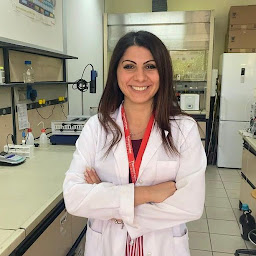Mycotoxins in Feed, Food, Nutraceuticals, and Functional Food
A special issue of Toxins (ISSN 2072-6651). This special issue belongs to the section "Mycotoxins".
Deadline for manuscript submissions: closed (28 February 2023) | Viewed by 17297
Special Issue Editors
Interests: bioactive compounds; polyphenols; nutraceuticals; antioxidant activity; high-performance liquid chromatography; mass spectrometry; orbitrap approach
Special Issues, Collections and Topics in MDPI journals
Interests: mycotoxins; antioxidants; bioactive compounds; polyphenols; mass spectrometry; waste and byproduct valorization
Special Issues, Collections and Topics in MDPI journals
Interests: sample preparation; extraction protocols development; metabolomics; food analysis; nuclear magnetic resonance; high-performance liquid chromatography
Special Issues, Collections and Topics in MDPI journals
Special Issue Information
Dear Colleagues,
Mycotoxins are a class of harmful secondary metabolites produced by fungi belonging to the Aspergillus, Penicillium, Fusarium, and Alternaria genera that could contaminate food and raw materials. Mycotoxins are extremely stable under food and feed processing conditions, posing a serious challenge to the food and feed industry. These toxic compounds have a wide spectrum of harmful human health consequences, including hepatotoxic, carcinogenic, teratogenic, nephrotoxic, and reproductive effects, among others.
To limit exposure to mycotoxins, researchers all around the world are working to find innovative extraction protocols and analytical methods for the rapid detection of mycotoxin contamination in both food and feed supply chains. Managing the risk of mycotoxin contamination in food and feed requires the application of sensitive analytical tools and procedures. Techniques based on high-resolution mass spectrometry (HRMS) coupled with gas chromatography or liquid chromatography for the development of multi-mycotoxin methodologies appear to be the most promising approaches for successfully detecting and quantifying mycotoxins.
In this Special Issue on “Mycotoxins in Feed, Food, Nutraceuticals, and Functional Food”, papers describing the worldwide occurrence of mycotoxins in various commodities are welcome, as are papers on the occurrence and co-occurrence of mycotoxins in human food, nutraceuticals, dietary supplements, and animal feed or relating to novel methodology for the analysis of mycotoxins in food and feed, as well as evaluation of reliable mycotoxins extraction procedures. We look forward to receiving your contributions to this Special Issue in the form of original research, case studies, or review papers, shedding light on perspectives on the occurrence and control of mycotoxins in different commodities and risk assessment.
Dr. Luana Izzo
Dr. Luigi Castaldo
Dr. Mattia Spano
Guest Editors
Manuscript Submission Information
Manuscripts should be submitted online at www.mdpi.com by registering and logging in to this website. Once you are registered, click here to go to the submission form. Manuscripts can be submitted until the deadline. All submissions that pass pre-check are peer-reviewed. Accepted papers will be published continuously in the journal (as soon as accepted) and will be listed together on the special issue website. Research articles, review articles as well as short communications are invited. For planned papers, a title and short abstract (about 100 words) can be sent to the Editorial Office for announcement on this website.
Submitted manuscripts should not have been published previously, nor be under consideration for publication elsewhere (except conference proceedings papers). All manuscripts are thoroughly refereed through a double-blind peer-review process. A guide for authors and other relevant information for submission of manuscripts is available on the Instructions for Authors page. Toxins is an international peer-reviewed open access monthly journal published by MDPI.
Please visit the Instructions for Authors page before submitting a manuscript. The Article Processing Charge (APC) for publication in this open access journal is 2700 CHF (Swiss Francs). Submitted papers should be well formatted and use good English. Authors may use MDPI's English editing service prior to publication or during author revisions.
Keywords
- mycotoxins
- food contaminants
- method development
- mass spectrometry
- secondary metabolites
- diet supplements
- occurrence
- retrospective analysis








